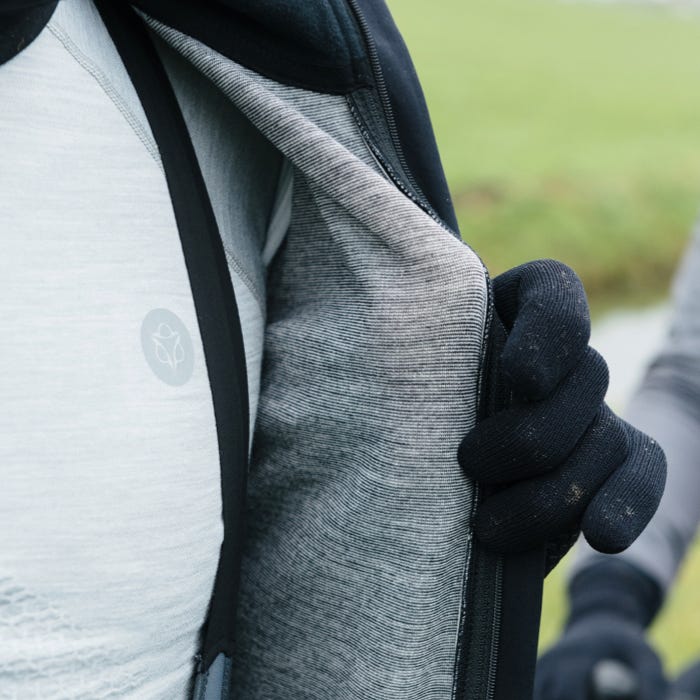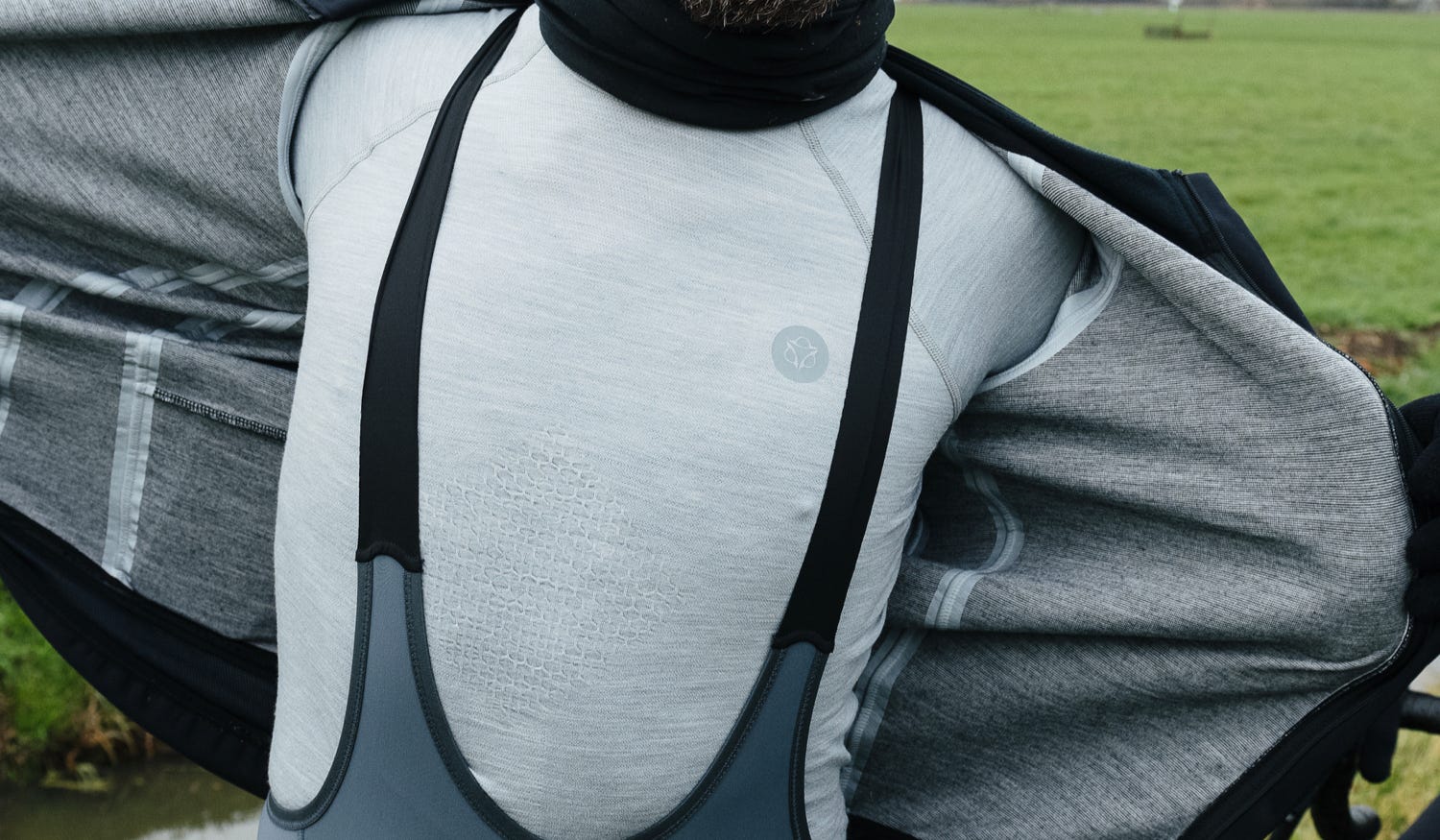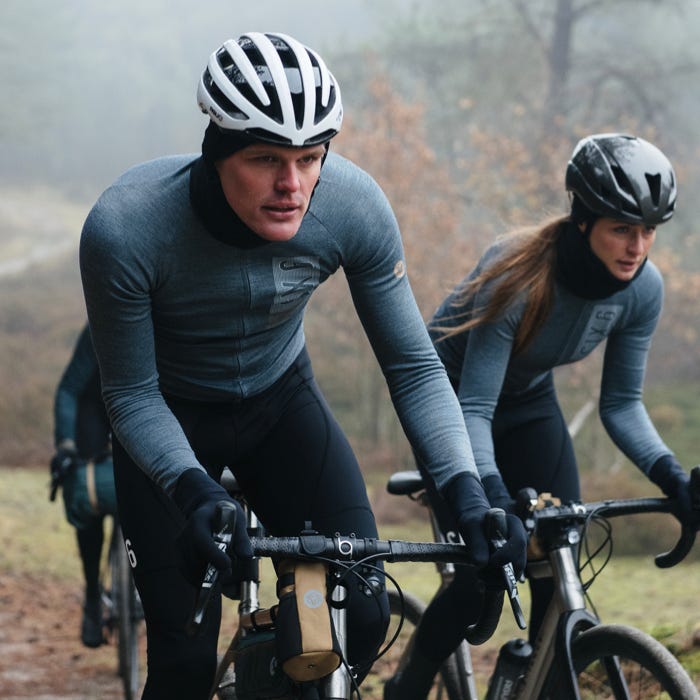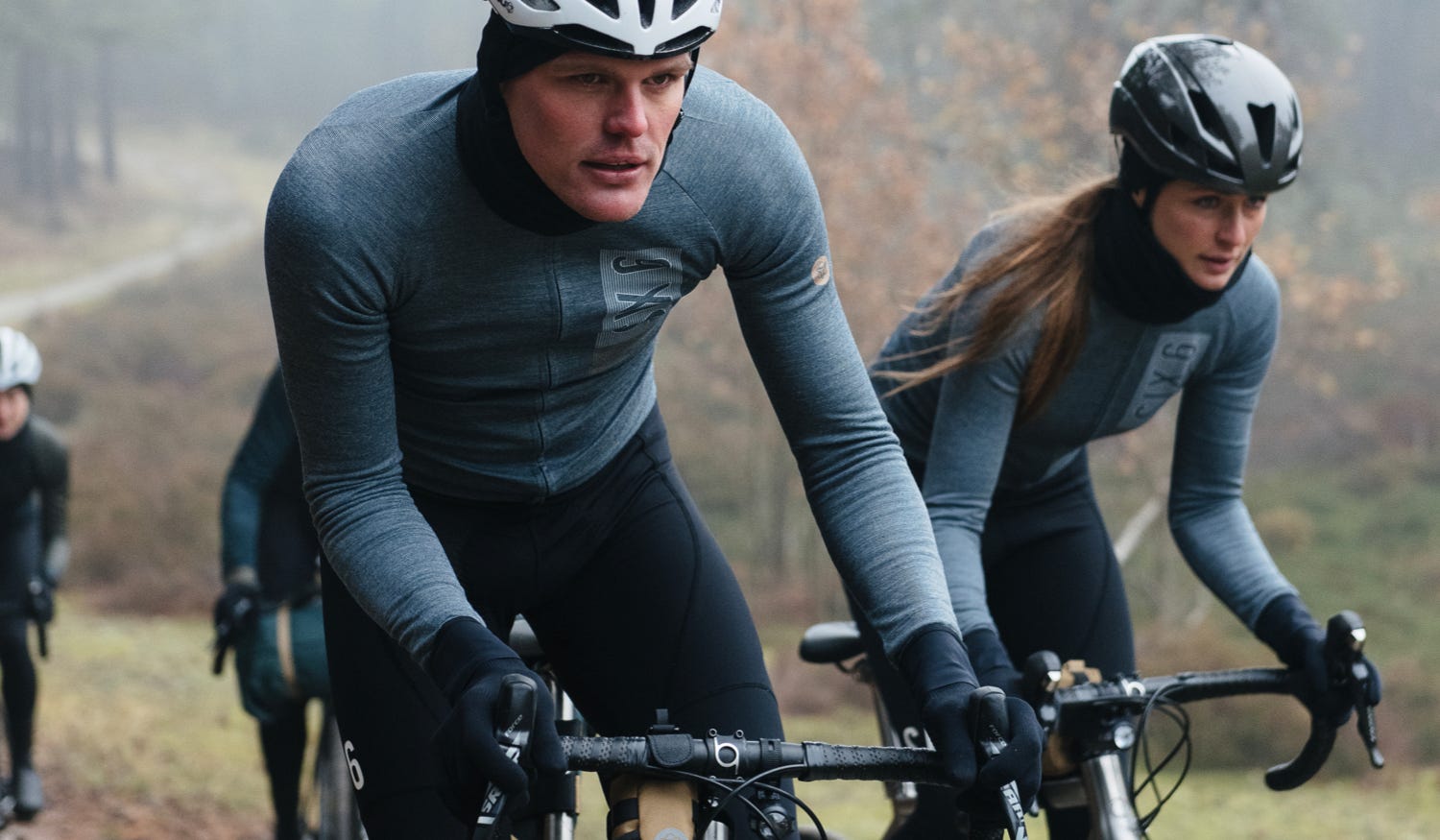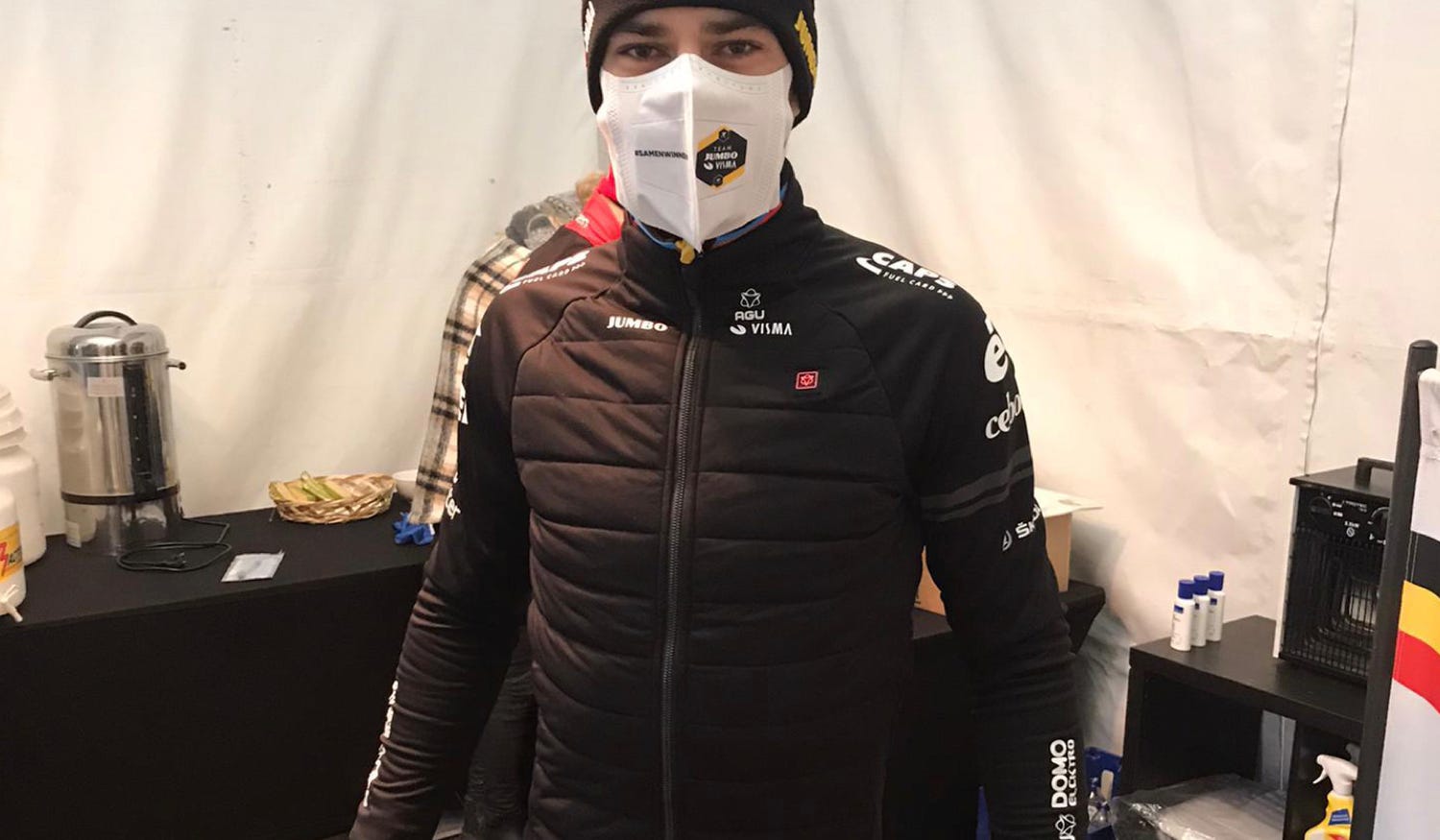

WE RIDE THE COLD
BUT HOW DOES LAYERING WORK?
When it comes to exercising in fresh air, nothing beats an autumn ride. Fresh air and challenging conditions that you want to prepare for well. Especially in cold and wet circumstances, you want to distribute your energy as efficient as possible. It all starts with dressing in multiple layers. In this blog we’ll explain how the layer system works and which jackets belong to which circumstances.
The SOLUTION
When it gets cold your first thought might be to put on thick warm clothes. But if you're going to exert yourself, that is exactly what you shouldn't do. By layering your cycling kit, you can retain your body heat and yet wick away moisture. This is key to staying comfortable on the bike and increases your performance because you can better distribute your energy. The basic layer system consists of three or more layers of clothing that you wear on top of each other.
1. The first layer is the base layer and is worn directly on the skin. It should keep your skin dry by wicking away your sweat and as a result helps regulate the temperature of the body;
2. Layer two is the midlayer and aims to provide insulation while still breathing well, i.e. wicking away sweat, as well.
3. The outer layer protects you against the elements such as wind and rain.
The advantage of cycling with layers is that you can adapt to the conditions and even vary during your ride. Have you finished your warming-up or are the temperatures changing? Just take one layer off.
Layer 1: Base Layer - WICKING away Transpiration moisture
Proper moisture-wicking, which is also referred to as the level of breathability of a garment, helps you save energy. When you sweat, your body is trying to maintain a healthy temperature. As you exert yourself, your body heat rises and is dissipated through transpiration moisture. That takes energy. With low outside temperatures your sweat will cool off quickly, and if that happens on your skin, your body would need to reheat itself again, which takes even more energy. That's why it is imperative your transpiration moisture is transported away from your skin as quickly and efficiently as possible. A high-quality underlayer, therefore, forms the basis of your cycling outfit.
SYNTHETIC FABRICS
There are roughly two materials for underlayers: merino wool and synthetics. Synthetic fabrics wick away moisture well, so your shirt dries quickly. They are durable, lightweight, and breathable. The only downside is that, over time, the fabric could develop a bit of an old perspiration smell. Our thermal shirts however are designed with 'Polygene stay fresh technology'. This technology helps prevent bad odours as it targets the odour-causing bacteria. Our synthetic Everyday base layer comes in different colours and is available with both long and short sleeves.
Merino wool
Merino wool works differently because it absorbs moisture and keeps warm even when it is wet. This keeps your body temperature fairly consistent. An additional advantage is that merino wool does not smell. The material is organic and therefore also biodegradable. The only disadvantage of 100% merino wool is that it is slightly more fragile. In order to still get a robust fabric, our merino shirts are made from a blend (35% merino, 35% polyester, 28% polyamide, and 2% elastane). Our Winterday Turtle or the Winterday Baselayer Merino are great examples of this use of a blended merino wool base layer. In effect the best of both worlds. Our turtle shirt even has a small collar.
Layer 2: Mid-layer - insulation and breathability
The colder it gets, the thicker the intermediate layer should be. Always check the breathability because the second layer must also be able to wick sweat. As with our base layer, there's a choice between synthetic (polyester) fabrics and merino wool with our mid-layers.
If you go riding on dry fall or early spring days, the types of cycling shirts that are great mid-layers, can also be used as an outer layer because they provide more than sufficient protection against the elements.
POLYESTHER FABRICS
Our Thermo Essential Cycling Jersey is the ideal mid-layer in cold conditions, as it is lightweight and has the insulation of a cycling jacket. The fabric feels very soft and comfortable and the high collar offers just that little bit of extra insulation around your neck. Also available in neon colour to increase your visibility and safety on darker days.
Merino wool
As a mid-layer merino wool works really well. Because of the fine structure of the wool, it retains heat exceptionally well while remaining very breathable. A prime example of a merino mid-layer is the SIX6 Merino Cycling Jersey. This shirt breathes well and ensures that sweat is removed properly.
Bodywarmer
If you want to vary more with layers, go for a body warmer. Easy to wear as an intermediate layer, but also as an outer layer. Stretching and folding a body is a breeze compared to a jacket. Ideal when you get too hot. The Essential Wind Body already gives great results around 10°C. For colder days you can choose between the Essential Padded Body or the Polartec Alpha Body.
Layer 3: Outerlayer - WIND & WATER-REPELLENT OR WATERPROOF
The outer layer protects you from the elements such as wind, rain and snow. As a cyclist you can choose between a combination of windproof & water-repellent or windproof & waterproof. Also look at the breathability with this layer. If you are going for an intensive training, choose a more breathable outer layer.
We have listed three weather conditions so that you get an idea of which jacket is suitable for which condition.
IN THE COLD
If you are going to train at a low heart rate in cold temperatures, dress warmly. In such a case, choose a colorful Solid Thermojacket Trend or SIX Polartec Alpha Thermojacket. Both jackets are windproof and water repellent. They also breathe excellently. The warmest jacket (without heat panels) is the Neoshell Thermojacket Premium. The most waterproof and breathable premium jacket from our collection.
Slippery road surfaces and colder conditions increase the risk of breakdown or injury. If you break down during a winter training, you cannot do without a Deep Winter Heated Thermojacket. This jacket is fitted with built-in heat panels. This makes the heated jacket less suitable to wear while training, as it is less breathable. Wout van Aert uses it to quickly warm up after a cold day of racing!
IN THE RAIN
Cycling in rainy conditions is great as long as you wear the right clothes. Thanks to a Poray membrane, our rain jackets do not only keep the rain out but also breathe well. The higher the Poray number, the better the protection and breathability.
In our range, we have the Essential Raincoat, the Storm Breaker, and our Event Rain Jacket. Respectively good, better, best. The Essential Raincoat has a Poray 5,000 membrane and is suitable for unpredictable weather conditions. The Storm Breaker has a Poray 10,000 membrane and is perfect for high-intensity training. The Event Raincoat Premium is the ultimate raincoat for the competitive cyclist and will keep you dry even during the heaviest rain showers.
In the cold and rain
All our jackets ensure that you stay warm and dry during training. Two jackets that are particularly warm and waterproof are the Storm Breaker Winter Thermo Jacket and the Merino SIX6 Raincoat. The Merino model is lined with organic merino wool, which optimally regulates your body temperature and is fully waterproof.
"The ART of LAYERING"
When you layer your clothing, you can vary endlessly in materials and product attributes. When choosing which layers to wear, be sure to take the weather into account, but also your training schedule. If you are going to train at a low intensity, dress warmly. Planning an intensive training? Make sure you wear thinner well-breathable clothing.
